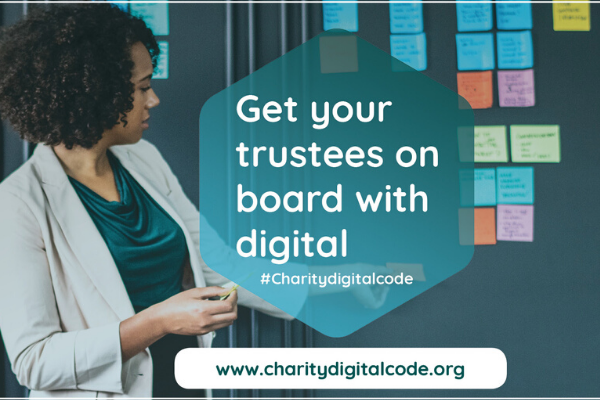Insights
INSIGHTS
All Topics
My Account
Five Steps to Securing Board Approval
16 Nov 2020by Aidan Paterson
We walk you through our step-by-step plan for securing stakeholder approval
As soon as the idea of investing in new technology is broached, trustees start running the numbers.
They will want to know about the benefits, the cost, and your plan for introducing the technology and managing change.
So, if you want to secure board buy-in for introducing new technologies or processes within your charity then you will need to have clear, concise and actionable answers to these questions.
When introducing any new technology or process, one of the biggest obstacles you will face is a lack of awareness and understanding. This can lead to scepticism, which will only make your job harder.
Put stakeholders at ease by highlighting the benefits offered by the technology and focusing on the positive impact that you believe it will have within your organisation. Focus on your shared mission, as well as your organisational goals, and position your pitch item as a tool that will help you achieve your targets.
Here are five steps to help you prepare for the big pitch:
1.) Connect the technology to your mission
Your board will want to know ‘why’?
Their primary job is ensuring that resources are effectively stewarded in pursuit of the organisation’s mission. To that end, explain how an investment can support this.
Remember, you are in the perfect position to pitch these new processes, because (unlike an external consultant) you are already familiar with your organisation’s values and goals. You understand and value your shared mission.
Focus your pitch on this. Identify your board’s objectives. How do these align with your shared mission? Position your pitch item as a set of tools to help your charity achieve them.
2.) Start small
Board members and stakeholders will want to see a demonstrable return on investment. Your pitch will be more effective by proving the efficacy of the concept on a small scale.
If appropriate, start by piloting the technology with a team that’s willing to tolerate the change, take a risk, and provide feedback. Think of your pilot like a science experiment: identify the hypotheses to be tested, make a prediction, and record the results.
You can also use employee engagement technology to collect qualitative data that will resonate with financial decision-makers. Find out how people within your organisation are working, and whether implementing these processes would increase efficiency. This ensures that any proposals are actionable, benchmarkable and measurable.
This attention to detail will pay dividends. You’ll learn a lot and your board is likely to reward your measured approach. Seeing the pilot team up and running will also make securing buy-in from team members an easier proposition when the time comes. Organisational change is a cultural issue. By helping team members to take ownership of this change, you empower them to become digital champions.
3.) Have a plan
Show stakeholders an action plan of how the outlined benefits will be realised. Provide a detailed timeline of activities with clear milestones.
This is an opportunity to manage expectations. Head off any objections by outlining potential pitfalls and showing what will be done to avoid them.
Vendors will often have resources to help you here. Ask your account manager (if you have one) or do a search for templates and toolkits.
At this point, it’s important to take a temperature check. You may be faced with a lack of understanding or confidence. Or, if enthusiasm is high, board members may have unrealistically high expectations. Both are important to address.
It is crucial to the success of this change that you adopt an iterative approach, and clearly explain that development will happen organically and over time. Tell stakeholders that a process of trial and error is necessary to some extent. Clearly state this will be a necessary part of the process, as it will provide your organisation with valuable lessons, and will help you to tailor your strategy to your own unique needs.
4.) Demonstrate ROI
The return on tech investments can be measured in three categories: hard savings, soft savings, and strategic value. Hard savings occur when your new investment enables you to actually save money elsewhere.
Soft savings are realised when an investment creates new capacity in your organisation that can be repurposed to other tasks. This may occur, for example, when any manual task becomes automated. You can quantify these “soft savings” by multiplying the cost of people’s time by the amount of time they used to spend on those manual tasks. This kind of ROI doesn’t directly affect your balance sheet, but it’s often just as valuable as financial savings.
5.) Preach to the converted
Don’t go into the meeting alone.
Your enthusiasm will shine through, which will make your pitch all the more convincing. But it will be easier still to win over stakeholders if you make the pitch in tandem with a colleague who has already been convinced of the benefits of your pitch item.
Perhaps a team member has expressed similar concerns or has highlighted how their work can be improved or made more efficient through implementing the technology. Or maybe one of the people from your pilot scheme would be happy to share what they’ve learned. This demonstrates to your board how this new technology can be applied by people within your organisation.
Remember, that the ultimate aim of your pitch is to convince stakeholders that your proposal represents what is best for your charity - and that everything you are suggesting is designed to help achieve your common mission. If you’ve done your homework, and gathered data to back up your points, then you will make a compelling case.
More on this topic
Related Content
Recommended Products
Our Events
Charity Digital Academy
Our courses aim, in just three hours, to enhance soft skills and hard skills, boost your knowledge of finance and artificial intelligence, and supercharge your digital capabilities. Check out some of the incredible options by clicking here.




















